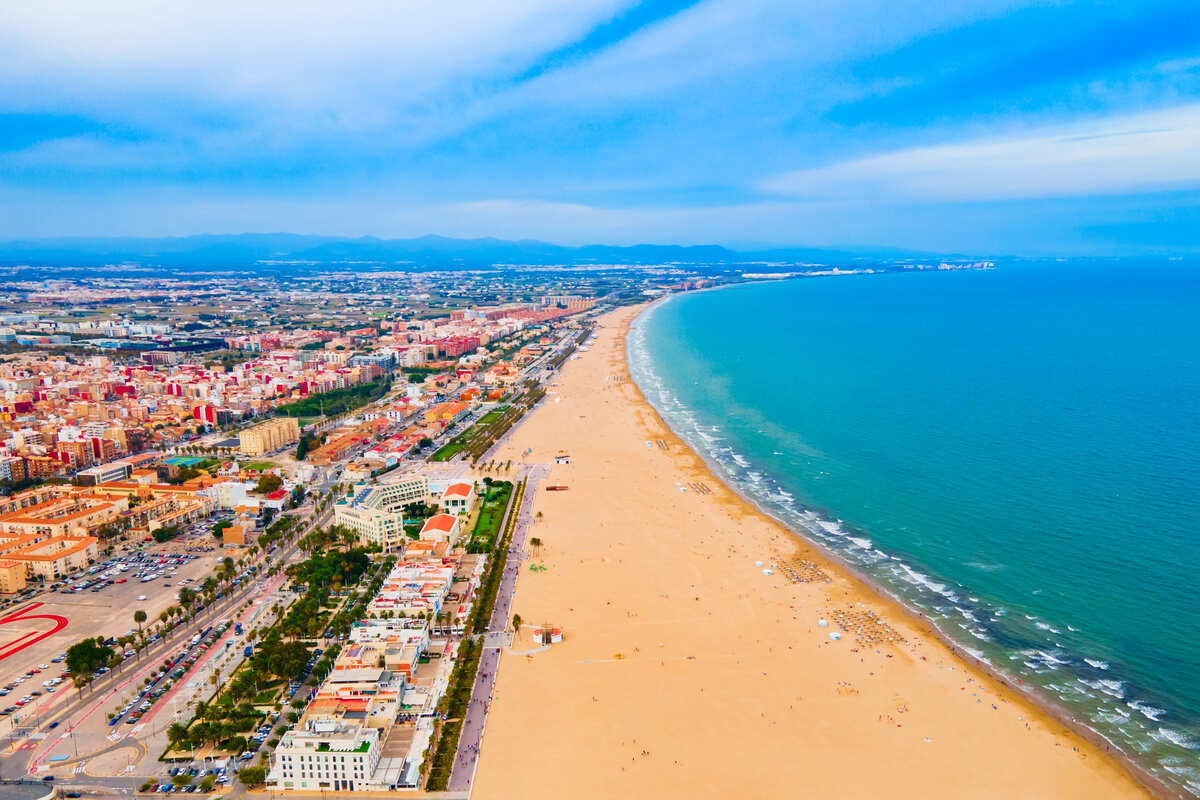Share the article
Last updated
For many Americans, crossing the pond is a summer affair, much like when Europe is at its liveliest, the beaches feel livelier and the seas are warm for swimming. But what if we told you that not all parts of the continent are plunged into darkness and freezing temperatures in winter?
In fact this lesser known seaside resort in Spain is known for being beautiful mild winters, with average temperatures of 23°C during the day and an average of 8 hours of sunshine per day on most days, even in January, the coldest month.

Looking at the weather forecasts, it’s no surprise that Valencia remains popular with tourists well into the low season, but that’s not the only reason why it has effectively become an all-year destination at this point:
Valencia is Spain’s next tourist hotspot
Valencia is the third largest city in Spain and also one of the most populous cities on the Mediterranean, with a whopping 1.6 million inhabitants in the wider metropolitan area.

It has become a staple of summer travel itineraries due to its privileged coastal location, with easy access to beaches and beautiful natural parks, and an impressive concentration of tourist attractions, ranking behind Madrid and Barcelona as a Spanish tourist hotspot.
A little introduction if we may: Valencia was founded as a Roman colony and was ruled over the years by several empires, including a North African-Muslim Caliphate, until Spain emerged.
This makes it a melting pot, with the many different influences clearly visible in the urban design.

It still follows Roman urban planning, located on a fertile land where the Turia River and the Mediterranean Sea meet, but its architectural heritage is anything but harmoniouscombining European and Moorish (North African) styles, and of course modern developments.
What to see in the Valencia area
The futuristic City of Arts and Sciences, a symbol of Valencia, is popular among museum visitors as it includes a planetarium, science museum, aquarium, innovative opera house and immersive art exhibitions.

At the same time, the city boasts an extensive collection of much older monuments, some of which have been added to the ever-growing list of UNESCO World Heritage Sites, including Lonja de la Sedaa late medieval secular building with a majestic Hall of Columns.
While walking through the center of Valencia, tourists will step into centuries of history, dating back to the Greco-Roman period up to modern times. unique combination of ancient, baroque and modernist monuments will certainly amaze them.
Valencia does primarily a coastal destinationand there are plenty of luxury beachfront hotels with stunning views of the turquoise Mediterranean Sea and sandy coast to choose from.

Valencia is an affordable coastal destination
Among the top-rated are the Las Arenas Balneario Resort, which is significantly cheaper to stay in during winter, with overnight rates from $184, the stately One Shot Palacio Reina Victoria, in the heart of Valencia, from $193 per night, and the SH Valencia Palace, with overnight stays as cheap as $141.
Furthermore, consumer prices in Valencia tend to be lower than in other Mediterranean hotspots, which is why the city has emerged as one of Europe’s most prominent destinations for digital nomads and expats.

Sunny days and vibrant culture aside, you can live a comfortable life and earn average incomes in Valencia $3,040 per monthor the equivalent in euros.
Perhaps even more surprising is that Valencia is quickly becoming a year-round destination, much to the surprise of the local authorities themselves, as the country continues to register more and more tourists. higher number of arrivalscompared to most sunny European cities, not until October.
Is Valencia already a year-round destination?

You could say this is hardly a remarkable achievement as Valencia is on the Mediterranean and thus primed for a better than average low season due to its warmer climate, but tourism in almost every other ‘Med’ competitor is declining the closer we get to December.
The cobbled hills of Santorini feel calmer, the fortified Croatian port of Dubrovnik suddenly becomes walkable again, and southern France returns to its crowd-free Savoyard glory – in other words, they’re (almost) abandoned by tourists as the weather conditions turn bleaker.
While this is great news for budget travelers, who typically prefer the shoulder months when prices drop, it’s a double-edged sword: many accommodation providers and restaurants operate only seasonally, reducing options and possibilities. a missing social scene.

Valencia, on the other hand – like much of southern Spain – is not affected by the seasonal draft the same amount, with 85% of hotels remaining open this winter and more than 1.036 million arrivals recorded in October only.
This is proof that foreign visitors are quickly realizing that Valencia has much more to offer than just beaches:
The Mediterranean may not exactly be ideal for swimming in January, and the evenings can be chilly, but with the temperate climate and long hours of sunshine, this is still a perfect retreat from the winter sun and, importantly, a cultural behemoth of the highest order.
Read more:
Top 5 Travel Insurance Plans from $10 per week
How to easily earn points for free travel

SUBSCRIBE TO OUR LATEST POSTS
Enter your email address to subscribe to the latest Travel Off Path breaking travel news, delivered straight to your inbox.
This article originally appeared on TravelOffPath.com





